Quince benefits for male and weight loss and pregnancy and skin
Quince benefits
Quince benefits for male and weight loss and pregnancy and skin on Nichooli site. We hope this article will be of interest to you.
Quince is a highly nutritious fruit with vitamins, minerals, and antioxidants, offering numerous health benefits. It aids weight management, supports the heart, liver, and stomach, and improves digestion. Quince’s antioxidant properties protect against free radicals and may combat cancer cells. However, excessive consumption of quince seeds or unripe fruit may cause side effects. Pregnant women may benefit from quince during the early weeks of pregnancy. For hair health, quince strengthens hair follicles and encourages growth. Overall, quince is a valuable addition to a balanced diet, but moderation and caution are advised for certain individuals.
Benefits of Quince
Quince, a unique fruit related to apples and pears, offers several health benefits:
Nutrient-Rich: Quince is a good source of vitamins and minerals. It contains vitamin C, potassium, and dietary fiber.
Digestive Health: The high fiber content in quince can aid digestion and prevent constipation. It’s also known for its anti-inflammatory properties, which can help soothe gastrointestinal ailments.
Antioxidant Properties: Quince is rich in antioxidants, which help neutralize harmful free radicals in the body. This can reduce the risk of chronic diseases and help with skin health.
Cardiovascular Health: The fiber, potassium, and antioxidants in quince are beneficial for heart health. They can help lower cholesterol levels and blood pressure.
Immune System Support: With its vitamin C content, quince can boost the immune system, helping the body ward off infections.
Weight Management: Low in calories and high in fiber, quince can be a good addition to a weight loss diet.
Anti-Allergic Properties: Some studies suggest that quince may have anti-allergic effects, which can be beneficial for people with allergies and asthma.
Culinary Versatility: Quince can be used in various culinary dishes. It’s often cooked or baked, as it becomes softer and sweeter, enhancing its flavor.
Side effect of Quince
Quince is generally considered safe for most people, but there are a few potential side effects and considerations to be aware of:
Raw Quince Can Be Hard and Sour: Raw quince is very hard and sour, which makes it difficult to eat raw and may be unpalatable for some people. It’s usually cooked to improve its texture and flavor.
Allergic Reactions: As with any food, some individuals might be allergic to quince. Symptoms of a food allergy can include itching, swelling, digestive distress, and in severe cases, anaphylaxis.
Gastrointestinal Issues: Although the high fiber content in quince is generally beneficial for digestion, it can cause gastrointestinal issues like bloating, gas, or diarrhea in some individuals, especially when consumed in large amounts.
Interaction with Medications: Quince may interact with certain medications. For example, because of its high vitamin K content, it could potentially affect blood thinners like warfarin.
Pesticide Residue: Like many fruits, quince can have pesticide residues on its surface. It’s advisable to wash it thoroughly, and if possible, choose organic varieties.
Cyanogenic Glycosides in Seeds: Quince seeds contain a small amount of cyanogenic glycosides, which can release cyanide when chewed or digested. While accidental ingestion of a few seeds is not likely to be harmful, it’s best to avoid consuming them in large quantities.
Quince nutrition facts
Quince is a nutrient-rich fruit, offering a range of vitamins, minerals, and dietary fibers. Here are the typical nutritional facts for quince, based on a 100-gram serving (approximately one small quince):
Calories: Quince is relatively low in calories, with about 57 calories per 100 grams.
Carbohydrates: Around 15.3 grams, primarily from natural sugars and dietary fiber.
Dietary Fiber: Approximately 1.9 grams, which is beneficial for digestive health.
Sugars: Contains about 12.5 grams of natural sugars.
Protein: Quince is not a significant source of protein, with about 0.4 grams per 100 grams.
Fat: Very low in fat, with only 0.1 grams per 100 grams.
Vitamins:
Vitamin C: About 15 mg, which is 25% of the Recommended Daily Allowance (RDA). Vitamin C is important for immune function and skin health.
Vitamin A: Provides a small amount of vitamin A, important for vision and immune function.
Folate (Vitamin B9): Contains about 8 µg. Folate is important for cell division and DNA synthesis.
Minerals:
Potassium: Around 197 mg, which is beneficial for blood pressure regulation and heart health.
Copper: Contains trace amounts, necessary for red blood cell formation and nerve health.
Iron: Contains about 0.7 mg, important for blood health.
Magnesium and Calcium: Provides small amounts of these minerals essential for bone health and various metabolic functions.
These values can vary based on the ripeness and variety of the quince. It’s also worth noting that quince is often consumed cooked, which can alter its nutritional profile slightly. Cooked quince is commonly used in jellies, jams, and desserts, and the addition of sugar or other ingredients in these preparations can affect the overall nutritional content.
How to eat Quince fruit raw?
To eat quince fruit raw, it is important to choose ripe quinces that are golden yellow in color and emit a sweet aroma. Before consumption, ensure that the fruit is thoroughly washed to remove any dirt or residue. While peeling the quince is optional, some individuals may prefer to do so to minimize the fruit’s inherent tartness. Using a vegetable peeler or a sharp knife, carefully remove the skin. Next, cut the quince in half and delicately eliminate the tough core and seeds from the center. Once the preparation is complete, proceed to slice the quince into thin, easily manageable pieces or dice it into bite-sized portions according to personal preference. While quince fruit can still be somewhat firm and crunchy even when ripe, some individuals may find the raw taste too tart. In such cases, a simple remedy is to sprinkle a small amount of sugar or honey over the fruit to enhance its flavor profile and make it more palatable. After following these steps, one can now savor the raw quince fruit in all its uniqueness, appreciating both its distinct flavor and texture. However, it is important to note that quinces are naturally different from other fruits like apples or pears and do not possess the same softness and juiciness.
Benefits of Quince for skin
Quince offers several benefits for skin health, thanks to its nutritional composition and natural properties:
Antioxidant Protection: Quince is rich in antioxidants, including vitamin C and other phytonutrients. These antioxidants help combat free radicals, which are responsible for premature aging, wrinkles, and skin damage. By neutralizing these harmful particles, quince can help maintain youthful and vibrant skin.
Hydration and Moisturization: The natural properties of quince can aid in hydrating and moisturizing the skin. Its high water content and natural oils can help maintain skin’s moisture balance, leading to softer and smoother skin.
Anti-Inflammatory Properties: Quince has anti-inflammatory effects, which can be beneficial for reducing skin inflammation, redness, and irritation. This makes it potentially helpful for conditions like eczema, rosacea, and acne-prone skin.
Skin Healing: The nutrients in quince, particularly vitamins like C and E, aid in skin repair and regeneration. They can help in healing wounds, cuts, and other minor skin injuries more effectively.
Toning and Firming: The astringent qualities of quince can help tone and firm the skin. This can be particularly beneficial in facial skin care, helping to tighten pores and improve overall skin texture.
UV Protection: Some studies suggest that certain compounds in quince may offer a degree of protection against UV radiation, although it should not replace sunscreen.
Collagen Production: Vitamin C is crucial for collagen synthesis, which is vital for skin elasticity and firmness. Regular consumption of quince can support the maintenance of healthy collagen levels in the skin.
Gentle Exfoliation: When used in topical applications like face masks, quince can provide gentle exfoliation, helping to remove dead skin cells and promote a brighter, more even skin tone.
Quince fruit benefits in pregnancy
Among the properties of quince fruit, we can mention the usefulness of this fruit in pregnancy for women. The use of quince fruit and quince tea has many properties and benefits for women during pregnancy. The quince fruit contains high amounts of vitamin B6 and is effective and helpful for nausea and vomiting during pregnancy, therefore, it is recommended to consume the quince fruit during pregnancy, especially between the sixth and fourteenth weeks of pregnancy. Positive and beneficial effect on the fetus is another property of quince fruit. Quince fruit has a beneficial effect on the IQ level of a newborn and can increase children’s intelligence. Some studies, including the properties of quince, have also mentioned the effect of quince on the beauty of children.
How to eat quince seeds?
The quince seed is considered one of the best treatments for inflammations of the digestive system and mucous membranes, dry cough, chest pain, fever, and hoarseness, but you should avoid chewing and swallowing it because this seed contains a toxic and harmful substance, so Keep a few quince seeds in your mouth for a while and suck until the glaze is removed, then throw them out. You can also soak a few seeds in hot water and eat the glaze. Quince seed glaze is very useful for healing wounds and skin burns caused by fire or sun. To heal hemorrhoids, you can also apply quince seed glaze to the grain in the desired position.
Quince benefits for male
Quince offers numerous benefits for men, including supporting prostate health, aiding digestion, boosting the immune system, promoting heart health, and providing antioxidants for overall well-being. Its high water content contributes to hydration, and the fruit’s nutritional value benefits skin health. Additionally, quince is low in calories, making it suitable for weight management. However, these advantages are not exclusive to men, as both genders can enjoy the health benefits of quince. As always, it’s essential to consult a healthcare professional for personalized advice based on individual health conditions.
Quince benefits for male power
Quince, a fruit rich in various nutrients, offers several health benefits that can be particularly beneficial for men, including aspects that might relate to “male power,” often interpreted as vitality, energy, and overall well-being. Here are some of the benefits:
Rich in Antioxidants: Quince is high in antioxidants like vitamin C and various phytonutrients. These antioxidants help combat oxidative stress and inflammation, which can impact overall health and vitality.
Heart Health: The fiber, potassium, and antioxidants in quince are good for heart health. Maintaining a healthy heart is crucial for overall stamina and energy levels, which can indirectly influence factors related to male power and vitality.
Improved Digestive Health: The dietary fiber in quince aids digestion and helps maintain a healthy gut. A well-functioning digestive system is important for the efficient absorption of nutrients, which in turn supports energy levels and overall health.
Immune System Support: Quince is rich in vitamin C, which strengthens the immune system. A robust immune system is key to maintaining overall health and reducing downtime due to illnesses.
Blood Pressure Regulation: Potassium in quince helps in regulating blood pressure. Maintaining normal blood pressure is important for cardiovascular health, which is linked to energy levels and physical stamina.
Blood Sugar Control: Quince has a low to moderate glycemic index, making it a good fruit choice for stabilizing blood sugar levels. Stable blood sugar levels can help in maintaining consistent energy levels throughout the day.
Weight Management: Being low in calories and high in fiber, quince can be part of a weight management diet. Maintaining a healthy weight is important for overall health, physical comfort, and self-esteem, all of which can contribute to a sense of vitality.
Quince benefits for male testosterone
Quince, while a nutritious fruit with various health benefits, does not have a direct, scientifically proven impact on testosterone levels in men. However, its overall nutritional profile can contribute to general health, which is essential for maintaining normal hormone levels, including testosterone. Here are some aspects of quince that may indirectly support hormonal health:
Antioxidants: Quince is rich in antioxidants like vitamin C and polyphenols. Antioxidants help reduce oxidative stress in the body, which can positively affect overall hormonal balance, including testosterone levels.
Overall Nutritional Value: A diet rich in various nutrients, including those found in fruits like quince, supports general health. Good overall health is crucial for the proper functioning of the endocrine system, which regulates hormone production.
Heart Health: The fiber, potassium, and other heart-healthy nutrients in quince can support cardiovascular health. A healthy cardiovascular system is important for overall hormonal health, including testosterone production.
Weight Management: Being low in calories and high in fiber, quince can be a part of a weight management diet. Maintaining a healthy weight is linked to better hormonal balance, including testosterone levels, as excess body fat can affect hormone production and metabolism.
Stress Reduction: While there’s no direct evidence linking quince to stress reduction, a healthy diet rich in fruits and vegetables can contribute to overall well-being and help manage stress. Chronic stress is known to negatively impact testosterone levels.
Quince benefits for male sperm
Quince is a nutritious fruit that offers various health benefits, some of which can indirectly support reproductive health, including the health of male sperm. Here are a few ways in which quince may be beneficial:
Rich in Antioxidants: Quince is high in antioxidants like vitamin C and various phytonutrients. These antioxidants help combat oxidative stress, a factor known to negatively impact sperm quality and fertility.
Nutrient Content: The vitamins and minerals in quince, such as vitamin C, potassium, and folate, play roles in overall health, which is important for optimal reproductive function.
Anti-Inflammatory Properties: The anti-inflammatory effects of quince can contribute to overall health. Chronic inflammation is associated with various health issues that can impact reproductive health.
Heart Health: The fiber and potassium in quince are beneficial for heart health. Good cardiovascular health is important for overall wellbeing, including reproductive health.
Blood Sugar Control: Quince has a low to moderate glycemic index, making it a good choice for maintaining stable blood sugar levels. Stable blood sugar and metabolic health are important for hormonal balance and reproductive health.
Stress Reduction: While there’s no direct evidence linking quince to stress reduction, maintaining a balanced and nutritious diet, including the consumption of fruits like quince, can contribute to overall wellbeing and stress management. High stress levels can negatively impact sperm quality and fertility.
The benefits of quince seeds for the skin
Quince seeds are rich in vitamins and minerals and therefore have unique benefits for the skin. Using the quince seed extract on the skin keeps moisture and soothes the skin. On the other hand, the quince seed protects your skin from the harmful rays of the sun and prevents sunburn. The quince seed has exfoliating properties and therefore using it on the skin can remove dead skin cells and cleanse the skin like an exfoliator.
Is quince good for diabetes?
Quince can be a good addition to the diet for people with diabetes, thanks to its nutritional profile and low glycemic index. Here are some reasons why quince is considered beneficial for diabetes management:
Low Glycemic Index: Quince has a low to moderate glycemic index (GI), which means it causes a slower and lower rise in blood sugar levels compared to high GI foods. This is beneficial for maintaining stable blood glucose levels.
Dietary Fiber: Quince is a good source of dietary fiber, which slows down the absorption of sugar into the bloodstream, further helping in the regulation of blood sugar levels.
Rich in Antioxidants: The high antioxidant content, including vitamin C and various phytonutrients, can help reduce oxidative stress and inflammation, which are factors involved in the management of diabetes.
Nutrient Density: Quince is rich in essential nutrients while being low in calories and fat, making it a healthy choice for individuals looking to manage their weight, which is often a crucial part of diabetes management.
Cardiovascular Health: The fiber and potassium in quince support heart health. People with diabetes are at a higher risk for heart disease, so consuming heart-healthy foods is particularly important.
Despite these benefits, it’s important to consume quince in moderation and as part of a balanced diet. Diabetic individuals should monitor their blood sugar levels regularly to understand how different foods affect them. Additionally, quince is often used in sweetened preserves, jellies, and desserts, where sugar content can be high. Therefore, it’s better to consume quince in its natural form or in recipes where added sugars are controlled.
The origin of the quince fruit
This fruit is native to Southern Europe and Asia Minor and now it is grown globally in Turkey, China, Uzbekistan, Iran, Argentina, and New Zealand. Quince which is known as the golden apple and belongs to the rose family and is medium in size is fragrant and has flowers. The quince fruit season is autumn and winter. The ripe quince fruit looks like a pear and its color turns golden yellow. The quince fruit is like sand and has several seeds in the center. The quince surface has cracks and its color is yellow, its taste is sour, and it is usually consumed cooked.
Quince seeds for cough
One of the most common benefits of the quince seed, which has long been considered by traditional medicine doctors, is its use to treat cough. Quince seed glaze is very effective in relieving inflammation of the mucous membrane, as well as treating cough and softening the throat. Using quince seed gel can help a lot in treating dry cough and hoarseness.
Benefits of Quince for hair
.Helping the health and beauty of hair is one of the other properties of quince. The quince fruit is very useful for blood production and strengthening blood production and regulation of blood circulation strengthens hair follicles and helps in better hair growth and hair beauty. The quince fruit is rich in iron, copper, and zinc, these three minerals are useful for strengthening hair and increasing hair growth.
The complications of quince fruit
Eating unripe and raw quince fruit is not recommended because it is very slow digesting and astringent, and sweet and raw quince is harmful to hot-tempered people. Fluff on quince is difficult to digest and is very harmful to the throat and voice, so you must remove the fluff before eating it.
Quince fruit benefits for heart
Quince fruit provides several heart-related benefits due to its nutritional content and natural compounds. It can help reduce LDL cholesterol levels, regulate blood pressure with its potassium content, and neutralize free radicals with antioxidants. The fruit’s fiber aids in lowering cholesterol absorption, while its anti-inflammatory effects can benefit blood vessels. Additionally, quince’s low glycemic index assists in stabilizing blood sugar levels, and its hydration properties contribute to overall heart health. As part of a heart-healthy lifestyle, quince can be a beneficial addition to the diet. However, individuals with existing heart conditions should seek advice from a healthcare professional before making dietary changes.
Honey quince tea benefits
Honey quince tea combines the antioxidants and vitamin C from quince with the antimicrobial and soothing properties of honey. The tea may support the immune system, soothe sore throats, aid digestion, and promote respiratory health. It can also contribute to hydration and potentially help lower blood pressure. However, individual responses may vary, and they should not replace medical advice. Consult a healthcare professional before using honey quince tea for specific health concerns.
Quince fruit in Urdu
Quince کا پھل اردو میں ‘بہی’ کہلاتا ہے۔ یہ سیب اور ناشپاتی کے خاندان سے تعلق رکھتا ہے۔ اس کی خصوصیات میں اس کا مخصوص خوشبو دار ذائقہ اور سخت گودا شامل ہے۔ بہی کو عموماً خام حالت میں نہیں کھایا جاتا کیونکہ یہ کافی سخت اور کچھ کڑوا ہوتا ہے۔ اسے پکا کر یا جیلی، جام اور مربے کی شکل میں استعمال کیا جاتا ہے
Quince fruit in Hindi name
Quince کے پھل کو ہندی میں ‘श्रीफल’ یا ‘बही फल’ کہتے ہیں۔
Quince fruit in Hindi benefits
पाचन स्वास्थ्य: बही फल में फाइबर की मात्रा अच्छी होती है जो पाचन में मदद करती है।
एंटीऑक्सिडेंट्स: यह विटामिन C और अन्य एंटीऑक्सिडेंट्स से भरपूर होता है जो स्वास्थ्य के लिए फायदेमंद हैं।
हृदय स्वास्थ्य: बही फल में पोटेशियम होता है जो हृदय के लिए अच्छा है।
वजन प्रबंधन: कम कैलोरी और उच्च फाइबर के कारण यह वजन प्रबंधन में सहायक है।
प्रतिरक्षा प्रणाली: इसके विटामिन C से प्रतिरक्षा प्रणाली मजबूत होती है।
Quince fruit in Hindi and English
In Hindi, quince fruit is known as ‘श्रीफल’ (Shrifal) or ‘बही फल’ (Bahi Phal). It’s a seasonal fruit known for its unique flavor and health benefits. In English, it is simply called ‘quince.’ This fruit is typically hard and has a sour taste when raw, so it’s often cooked or used in jams and jellies. Quince is rich in dietary fiber, vitamin C, and antioxidants, making it beneficial for digestive health, heart health, and boosting the immune system.
Quince fruit in English
Quince is a unique and ancient fruit that belongs to the Rosacea family, which also includes apples and pears. It’s known for its bright yellow skin when ripe and a distinctive pear-like shape. The quince is native to Southwest Asia and is particularly popular in Mediterranean cuisine.
The fruit is quite hard and tart when raw, making it generally unsuitable for eating fresh. Instead, it’s often cooked, which transforms its texture into something soft and sweet, with a delightful floral aroma. Quinces are commonly used in jams, jellies, preserves, and also in savory dishes where they complement meats very well.
Nutritionally, quince is a treasure trove of benefits. It is a good source of dietary fiber, vitamin C, potassium, and several other essential nutrients. This composition contributes to various health benefits like aiding digestion, improving heart health, and boosting the immune system. The high level of antioxidants in quinces helps in fighting against free radicals, reducing inflammation, and possibly contributing to cancer prevention.
In culinary use, quince is versatile. It can be baked, poached, stewed, or turned into syrup. Quince paste, known as Membrillo in Spanish, is a popular accompaniment to cheese. The fruit’s natural pectin content makes it ideal for setting jellies and jams.
Quince fruit in Punjabi
In Punjabi, quince is known as “ਬਹੀ” (pronounced as ‘Bahi’). While not as commonly found in traditional Punjabi cuisine as in Mediterranean or Middle Eastern cuisines, it still holds its value as a fruit with medicinal properties and nutritional benefits. In the context of Punjabi culture, fruits like Bahi are often appreciated for their health benefits and are sometimes used in home remedies.
The use of Bahi in Punjabi households, when available, could be similar to its use in other cuisines – predominantly in cooked forms. Given the significant Punjabi diaspora, there has been an integration of various food elements from different cultures into Punjabi cuisine, which may include the use of quince in more innovative and diverse ways.
In traditional medicine and dietary practices within Punjab, fruits like Bahi are often recognized for their health-promoting qualities. The emphasis on natural and holistic approaches to health in many Punjabi households gives fruits like quince a valued place, particularly when considering its benefits for digestion, immune support, and overall wellness.
Quince jam
Quince jam is a delightful preserve made from quince, a unique fruit known for its fragrant aroma and tart flavor. This jam is popular in various cuisines around the world, especially in Mediterranean and Middle Eastern regions. Making quince jam is a lovely way to enjoy this fruit’s distinctive taste and aroma, particularly since quince is often too hard and sour to be eaten raw. Here’s a basic recipe to make quince jam:
Ingredients:
Quinces (typically 1 kg)
Sugar (amount varies depending on the weight of the fruit after preparation, usually equal to the weight of the prepared fruit)
Water (enough to cover the quinces)
Lemon juice (from one lemon)
Optional: A cinnamon stick or vanilla for extra flavor
Instructions:
Prepare the Quinces: Wash the quinces thoroughly. Peel and core them, then chop into small pieces. Remember to save the peels and cores.
Measure the Fruit: Weigh the prepared quince pieces. You’ll need an equal amount of sugar to the weight of the quince.
Cook the Quince: Place the quince pieces in a large pot. Add enough water to just cover the fruit. Add the lemon juice and optional cinnamon stick or vanilla. Bring to a boil, then reduce heat and simmer until the quince pieces are soft (about 30-40 minutes).
Add Sugar: Once the quinces are soft, add the sugar and stir until it’s completely dissolved.
Simmer: Continue to simmer the mixture. The quince will turn a deep pink or red as it cooks. This can take anywhere from 45 minutes to an hour. Stir frequently to prevent sticking.
Test the Jam: To test if the jam is ready, place a small amount on a cold plate. If it gels, it’s ready. If not, continue cooking and test again after a few minutes.
Prepare Jars: While the jam is cooking, sterilize your jars and lids by boiling them in water for a few minutes.
Bottle the Jam: Once the jam is ready, remove from heat. If you’ve used a cinnamon stick or vanilla, take it out. Pour the hot jam into sterilized jars and seal them while they are still hot.
Cool and Store: Allow the jars to cool before storing them in a cool, dark place. Refrigerate after opening.
Tips:
The longer you cook the jam, the thicker it will be. Adjust cooking time based on your preference for jam consistency.
The natural pectin in quince (especially in the peels and cores) helps the jam set. Some people make a pouch of cheesecloth containing the peels and cores and cook it with the quinces to add extra pectin.
Quince jam pairs beautifully with cheeses, bread, and pastries, and can be used in various desserts.
Enjoy your homemade quince jam as a spread, in desserts, or as a sweet accompaniment to savory dishes!

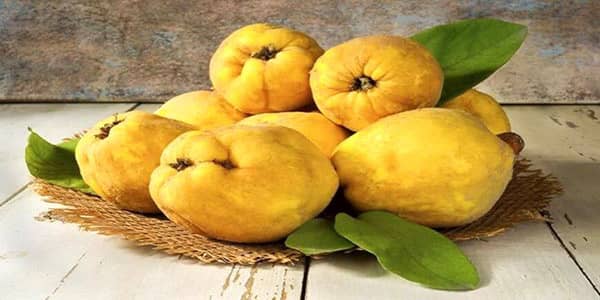
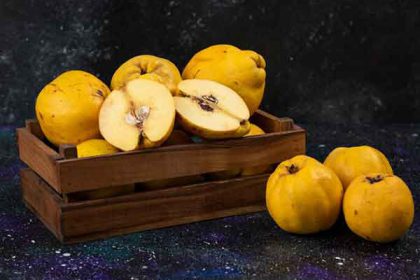
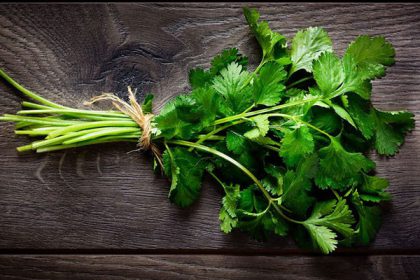
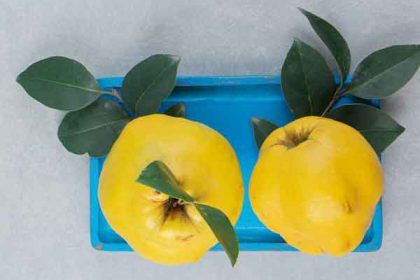
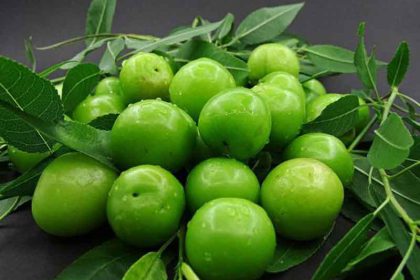
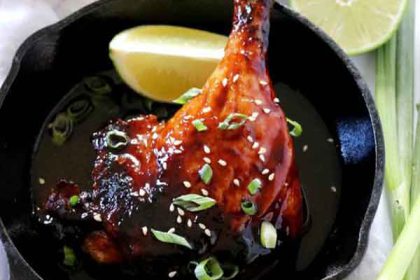
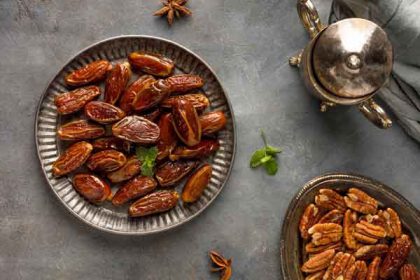
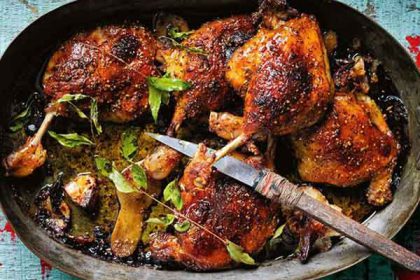
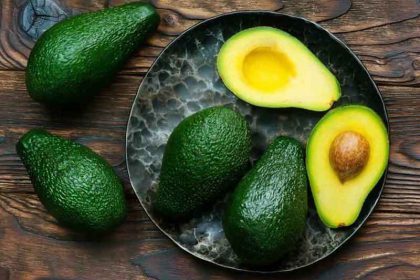
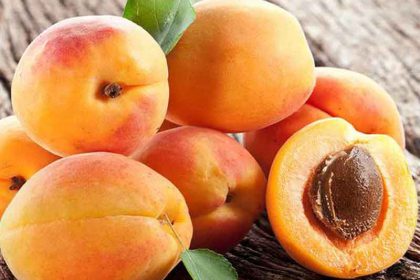
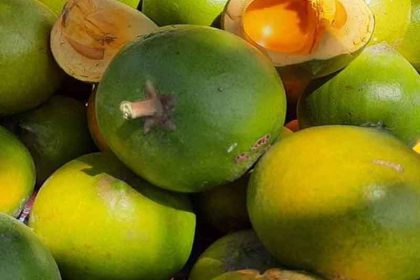
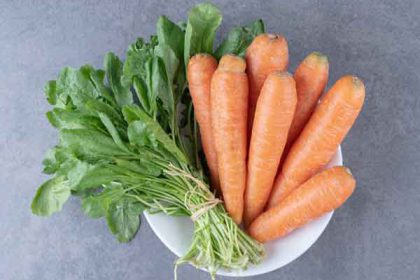
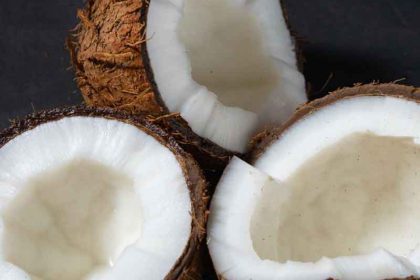
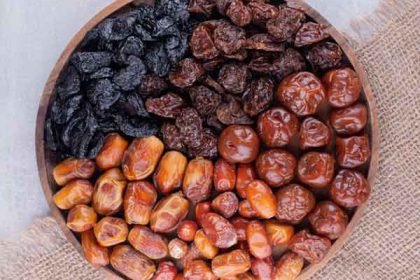
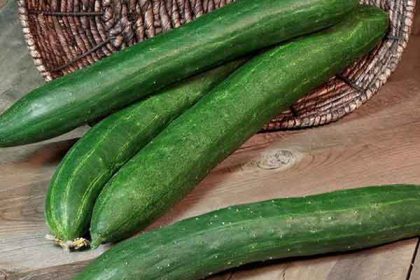
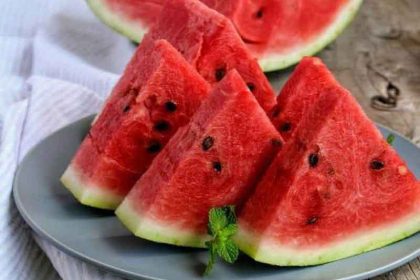
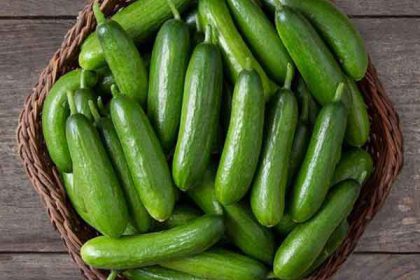
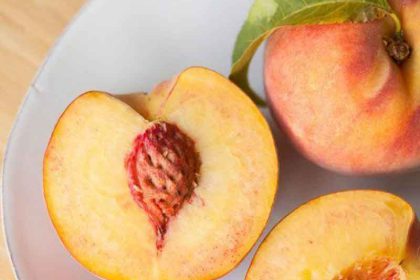

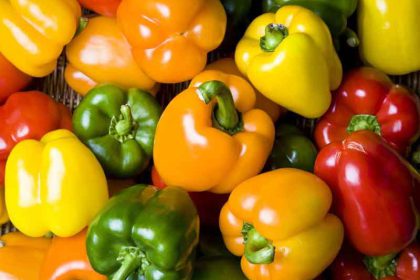
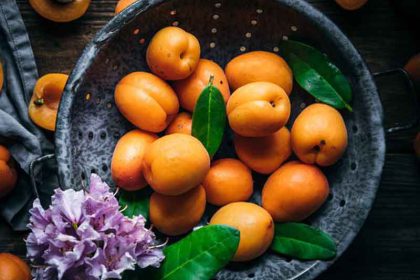

Thanks for finally talking about > Quince benefits for males and females
and hair and skin and pregnancy joker 123
Thanks for your helpful comments
Thanks for finally talking about > Quince benefits for males and females
and hair and skin and pregnancy รับสมัครนักศึกษา การแสดง ถ่ายภาพ การเงิน การจัดการธุรกิจ
Tank you. Your comments are valuable.